Seals of approval: best way to keep opened wine fresh
Seeing the bottle half empty? A taste test of wine-saving options reveals the best way to see it half full.
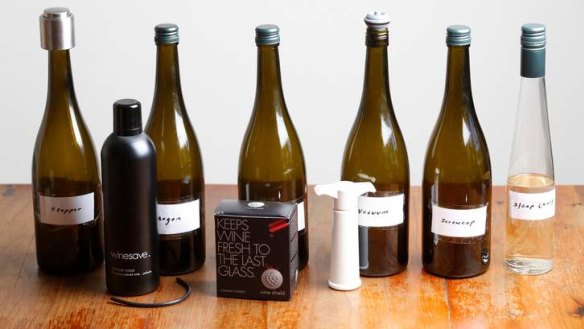
What's the best way to keep an unfinished bottle of wine tasting fresh? Do you simply reseal it, or use one of the various gadgets on the market – and do they work?
These are questions that divide wine professionals, who appear united only on the point that wine is almost always best enjoyed on the day it is opened.
“I'm old-fashioned, no wine-saving gadgets [at home], we just make sure we finish the bottle,” says restaurateur and sommelier Nick Hildebrandt.
His Sydney restaurants, Monopole, Bentley and Yellow, don't use preserving devices, resealing the bottles with their original cork or screw cap.
“Some wines last well into the next day and others don't," Hildebrandt says. "We carefully monitor each wine by the glass as well, to make sure we are not serving oxidised and inferior wines.”
At work, Van Haandel Group sommelier Lincoln Riley uses an argon gas preservation system. Even so, he says bottles at Stokehouse are checked before serving. “Only a few are viable two-day prospects,” Riley says. “Hence we don't offer crazy amounts by the glass.”
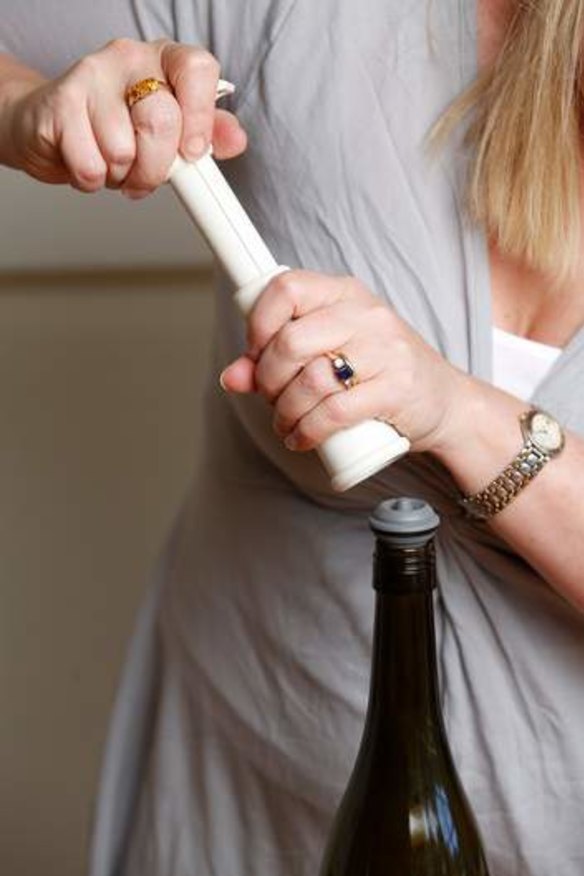
Wine doesn't go off, per se, but loses quality before becoming actively unpleasant. The villain is oxygen. Although a little air is often good for wine, the longer it is exposed to oxygen the more it changes. Some wines, typically robust reds, benefit from a day or two of “development” in an open bottle. But in most, fruit smells and flavours dissipate. The wine starts to oxidise and taste sharp and “vinegary”. That's why wine-saving devices are typically designed to limit contact with air.
Put to the test
I trialled six wine-saving techniques, with the upfront expense ranging in price from nothing to $30. Put to the test were four different devices, reapplying the original seal and pouring leftover wine into a 375ml wine half bottle, thoroughly washed and dried. I tried this last method because it was recommended by a couple of veteran winemakers who had used it for years before gadgets became widely available. They still use it.
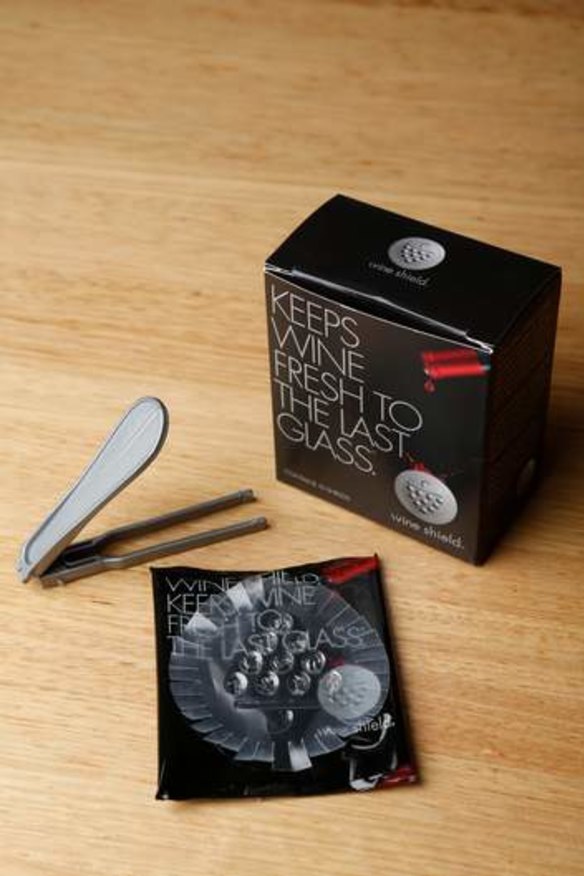
The test subject was a 2013 cool-climate pinot gris – a spicy, floral wine with a dry, acid finish. The six bottles were refrigerated and sampled daily (30mls at a time) over the following four days, with relevant preservation techniques reapplied immediately after pouring.
When I sampled the wines I knew how each had been sealed. For technical back-up and a second opinion I conscripted a wine-show judge and had him try the wines blind – which is to say he was sober but tasted from unmarked glasses and did not know which methods had been used.
The results
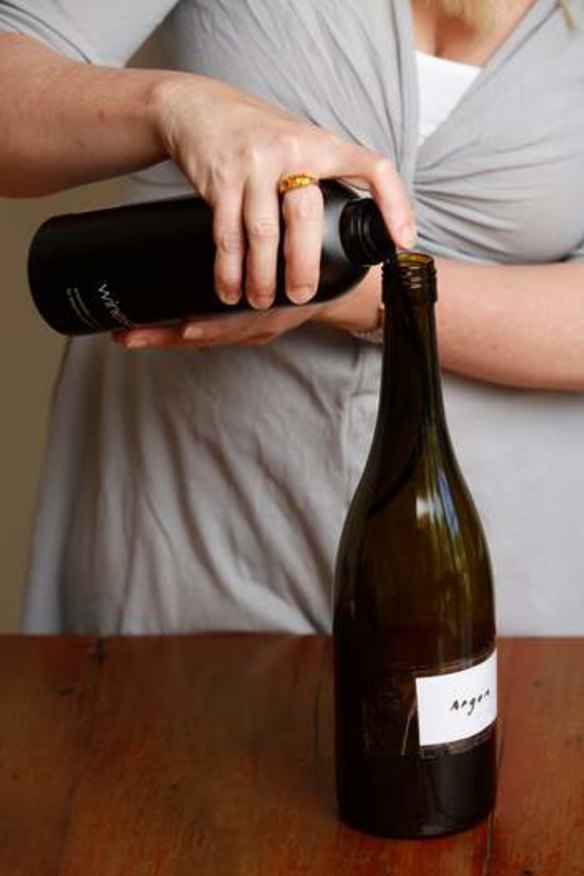
So how did a reused wine half bottle compare with resealing with the screw cap and the four commercially available wine saving devices? The results are ranked from most successful to least.
1. Half bottle, no additional cost if you have an empty wine half bottle in the house (otherwise buy a half bottle of wine, enjoy drinking it, and wash the bottle. Spend what you like – just make sure it has a screw cap)
What it is: A low-tech approach – gently decanting into a clean, empty 375ml wine bottle. This reduces the ratio of air to wine in the bottle, as well as the wine surface exposed to air. Both elements are important – it's why it's not really worth saving a bottle in which a single glass remains, and why you should store opened wine upright, not on its side.
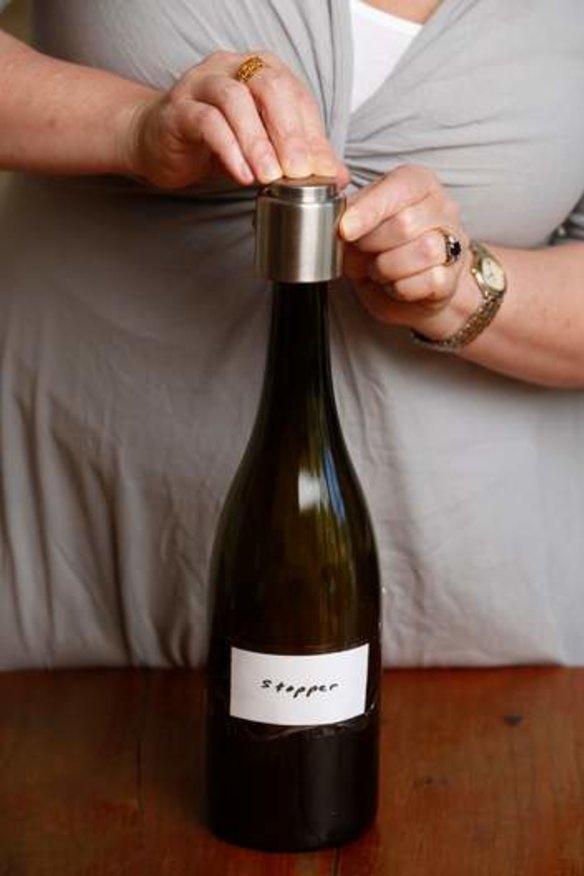
The verdict: The winner in this trial – equal best on day two with Winesave and Wine Shield, and the best of a pretty ordinary-looking bunch by day five. There are caveats: this approach only works if you have half a bottle or less that needs saving. Also, if you're a hard-core wine buff wanting to save an old, fragile wine, the decanting might introduce more air than the wine can cope with. If that's the case you're probably better off leaving the wine in its original bottle and going with Winesave or Wine Shield (see below).
2. Winesave, $27 (for 50 applications)
What it is: A user-friendly delivery system for the inert, odourless argon gas used by many restaurants to form a protective “blanket” between the wine and the air in the bottle. Its many influential advocates swear by it. The at-home version comes in a canister: you attach a tube to the nozzle to squirt the gas into the bottle before reapplying the original seal.
The verdict: Worked reasonably well over five days but left me sceptical about claims that it can keep wine in condition for weeks. On day two the test bottle was nicely aromatic and drinking well. On day five it was still one of the better performers but – as with all the other wines – had lost condition.
3. Wine Shield, $10 (for a pack of 10)
What it is: A piece of flexible, circular plastic inserted into a partly drunk bottle to become a floating lid, claiming to keep wine fresh for up to five days after opening. Fiddly to insert – it's done via the sachet in which each "shield" is packaged – but not hard once you have the knack. You then reapply the original seal. Hard to find in stores but available online.
The verdict: Pretty good. On day two the wine still smelled pleasantly floral and tasted fresh and zesty. The shield continued to perform strongly for the following couple of days but lost ground in the final tasting on day five to finish behind Winesave and Vacu Vin. Pricier than the other methods because the shields are single-use, but better deals are available if you buy in bulk.
4. Vacu Vin, between $20 and $30 for a kit containing a hand pump and pair of reusable rubber stoppers
What it is: A brand name for a device designed to suck air out of the bottle. Its critics argue that it can't create a true vacuum, and that even a partial one means sucking away aromatics, but it has been a global bestseller for years. Those who use it include Kara Maisano, sommelier at Melbourne's Masani restaurant, who has stuck with it at work and at home after experimenting with other devices.
The verdict: Inconclusive. Not looking good on day two, when the wine had lost much of its nose and seemed flat on the palate. It came as a surprise on day five when it performed better relative to the others than on previous days, rating the same as Winesave on that day.
5. Screw cap, no additional cost
What it is: The original metal seal that came with the bottle.
The verdict: The wine was still OK on day two and unpleasant on day five. This technique, if we can call it that, ranks above the one below only because it's free.
6. Bartender Wine Stopper, $7
What it is: “Press the button on top, and a vacuum seal will be created that stops your wine from going off in the fridge,” says the website of a popular store selling this device. It locks on to bottles with plain, straight necks designed for corks but did not fit the screw cap necks I tried. The stopper is made from stainless steel with a plastic interior. It's a stretch to call it a preserver as it doesn't seem to do anything that a cork (or screw cap) wouldn't.
The verdict: No better than replacing the original seal – I might use one if I was having trouble reinserting a cork but then I'd want to use Winesave or Wine Shield as well. One of the poorest rated results on both day two, when the wine was still perfectly drinkable but losing freshness, and on day five, when it was becoming unpleasantly sharp and sour.
Would you bother?
One thing that was very clear was that on day five, even the best preserved bottles were nowhere as zesty and appealing as a newly opened bottle of the same wine. Given that the untreated 375ml bottle worked well on both day two and day five, is it worth coughing up for a preserving device?
Two important caveats: Other wines might well respond differently to the various devices and yield different results. It's also worth remembering that by day five, each bottle had been opened and re-exposed to air several times; they could be expected to last longer if undisturbed over the same period.
Other than air, open wine's great enemy is heat. Some wine lovers happily refrigerate open reds and let them warm up before drinking; others say a domestic fridge is too cold. If your house is warm, find somewhere cool.